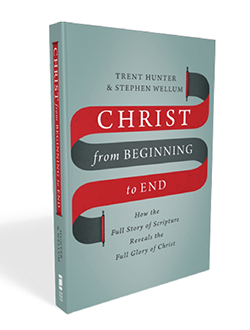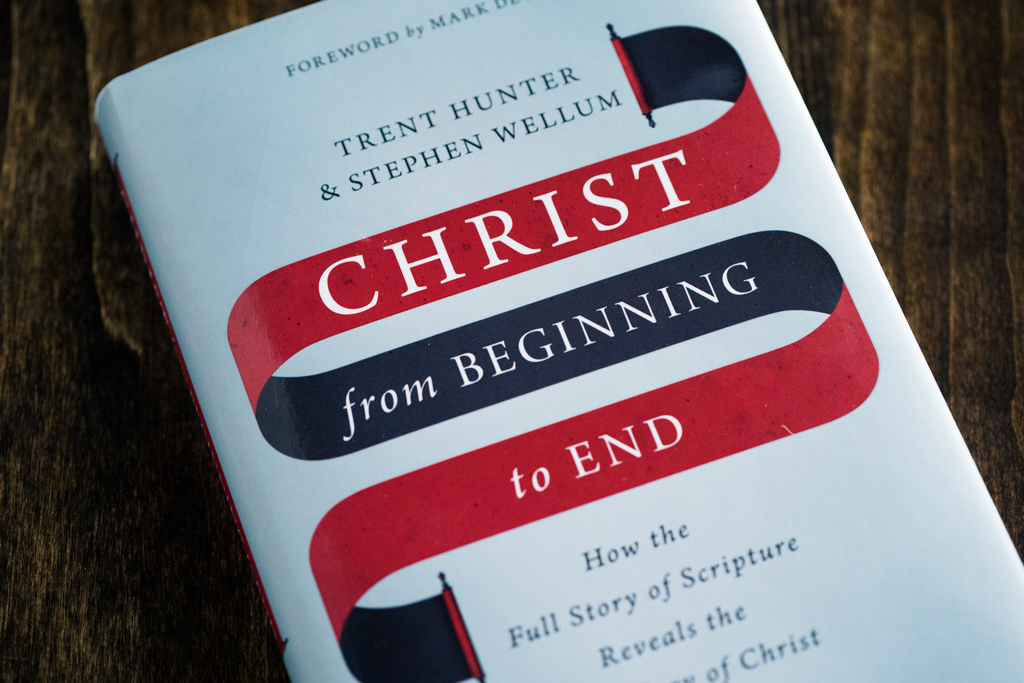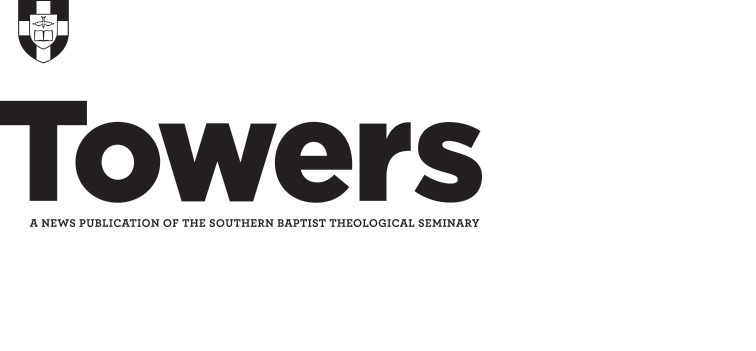Not everyone will study theology. But everyone should be able to study the Bible the right way. This is why Stephen J. Wellum, professor of Christian theology at Southern Seminary, and Trent Hunter wrote Christ from Beginning to End: How the Full Story of Scripture Reveals the Full Glory of Christ. This book helps readers to read the Bible rightly and to keep God’s purpose in mind throughout the entire story.

Christ from Beginning to End grew from a teaching partnership between Hunter and Wellum at Ninth and O Baptist Church in Louisville, Kentucky. Wellum had long been teaching the concepts presented in the book and Ninth and O and in the classroom at Southern Seminary. This book makes that teaching available to all.
Hunter and Wellum liken reading the Bible to a puzzle: “You know that the Bible is a book about Jesus, but when you crack it open and poke around inside, you’re not quite sure how it all fits together.” And they encourage readers to not give up on reading the story. It’s complex, and sometimes intimidating, but each chapter, from the Old Testament to the New, reveals more of Christ.
“We want you to see Christ in all his glory in all of Scripture — in the cracks, corners, and turns of the Bible’s complex and scenic story,” they write.
The authors organize the books in two parts. In part one, they answer the first question we ask when we read the Bible: What is it? And within they answer three central questions: (1) Who wrote the Bible? (2) How does the Bible come to us? and (3) What is the Bible centrally about?
“While the Bible is written with words like any other book, the Bible is not like any other book,” they write.
It’s not like any other book. It’s both a divine book and a human book, they write. God, through human agency, is the author of the Bible. “If we are to read the Bible on its own terms,” they explain, “we must read it as a divine book, a book authored by the triune Lord.”
Because the Bible essentially has one author, readers can assume that the story is unified. To see the unified story, it must be read in context — as part of a whole. Hunter and Wellum provide three contexts to keep in mind as readers study each passage: the close context (the passage on the page), the continuing context (the passage in light of what has come before), and the canonical context (the passage as a part of the entire storyline).

“Because the Bible is a puzzle, we must discern how the pieces are intended to fit together,” they write. In part two, Hunter and Wellum examine the story itself and demonstrate just how to read each part as one small piece of the entire puzzle. The story of Moses, for example, is the story of Israel. It’s also a continuation of covenant between God and his people pointing back to creation. And it’s the story that “God alone saves,” pointing to Christ and his covenant in the New Testament.
This portion of the book addresses some of what Wellum wrote with Peter Gentry, professor of Old Testament interpretation at Southern Seminary, in Kingdom through Covenant: A Biblical-Theological Understanding of the Covenants in 2012 for the academy. In Christ from Beginning to End, this theme is easily understood.
Hunter and Wellum lead the reader through creation to David, the prophets, Jesus, and revelation and the new creation, and how each piece points to Christ and reveals his glory.
“Books that discuss how the Bible is about Christ from beginning to end are not merely for academic interest but for the entire church,” they write. To that end, Christ from Beginning to End is an approachable companion to Bible study, teaching its audience to read the story rightly in order to see Christ’s throughout.
(Zondervan 2018, $22.99)





